Full frame 35mm. Mini a7II interchangeable lens camera review
Hi geektimes. Probably almost every amateur photographer and owner of a digital SLR camera ever thought about a full-frame DSLR. The more cameras matrix, the less noise, better color rendition, a spectacular DOF (aka DOF), higher FSI . Once upon a time, the first such camera was the Canon 5D, but at that time it was something cosmic, both in price (about 120 thousand with an average salary of an engineer in 45) and in mass with dimensions. However, even with such a cost, 5D at that time was considered a breakthrough in price, since other full-frame cameras were much more expensive.
10 years have passed since then, and digital technologies have noticeably gone ahead. Cameras with a full-frame matrix are now cheaper, and their capabilities, naturally, are greater than those of cameras 10 years ago.
Who are interested in the impressions of the "teapot" from the camera Sony A7II, please under the cat.
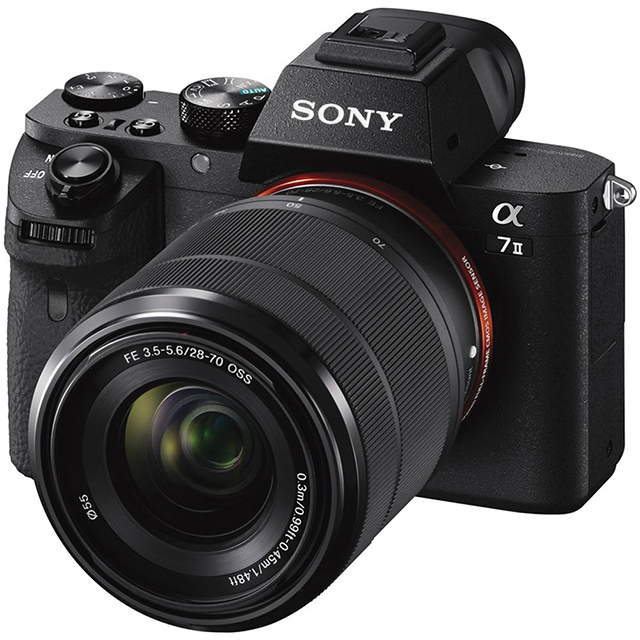
Before that, I used a camera of a similar type, Sony NEX5, so comparing them was all the more interesting.
Quite conventionally, “mirror” cameras can be divided into 2 subspecies - large-sized SLR cameras with a “real” mirror and phase autofocus, and mirrorless cameras that have the same matrix, but focusing as digital cameras, using a contrast method and viewing the screen. The division is very conditional, now almost all cameras are capable of working and so (there was a time when there was no live view in the mirrors, and you only had to look through the viewfinder). From the user's point of view, plus cameras of the first type have a much longer battery life - when the screen is off, the SLR uses almost no energy. But plus cameras of the second type are much more compact in the camera, since there is no mirror in it.
In this regard, Sony a7 refers to the second type. The camera is very compact, the shape of something resembles Sony NEX. The control is much more convenient - all the main functions are placed on buttons or buttons, there is practically no need to climb into the menu.

Some do not like such an abundance of buttons, although in reality it is very convenient, everything is at hand, and in principle nothing superfluous. The LCD screen is clear and of high quality; many elements of the layout are almost indistinguishable from the NEX series. Unlike the NEX, a viewfinder has been added here (of course electronic), although for me there is practically no benefit from it, it would be better to save a centimeter of height and $ 50 in cost. It turns on automatically: if you bring the camera closer to the eye, the screen turns off and the viewfinder turns on. For fans of the "old school", you can turn on the display of pictures only in the viewfinder.
USB
Everything is standard here - we connect the camera, you can select the mass storage or MTP mode. But there is an important plus. A dream come true idiot - the camera can now be charged directly via USB. Finally, you don’t need to carry a debility individual w / c with a separate wire with you on trips. My first digital camera was the Canon 300d (the old-timers probably remember this model), and 15 years had not passed before the battery was finally implemented in the camera. And finally, the praise of standardization, you can take a single power supply for all charging devices on trips .
Wi-Fi
Finally, progress has reached the cameras. In an era when even a toothbrush connects to a smartphone, sticking a cable in order to upload a photo is somehow lazy. So, the camera has a Wi-Fi module, which theoretically allows access to files directly on the home network. "Theoretically," because in practice it was not so easy. First you need to connect the camera to your home network. Then you need to install on the computer the PlayMemories program from Sony, which contains the necessary services. After that you can access the files.
I immediately decided to check how it all works, put the old NEX5 flash drive into the camera (there were about 3000 files on it), took a couple of photos and decided to download them. I chose the option “transfer to computer” in the camera menu, the camera connected to the home network, my computer automatically recognized the presence of a new media disk. But that was it. Instead of showing everything as it is, “smart” software decided to automatically split the photo by date, in the form of virtual folders. However, the flash drive was 16 gigabytes of photos for the past 3 years, somewhere around 4,000 pieces. In general, I waited 10 minutes, then the camera fell off on a timeout from the access point, not a single file was downloaded. Several repeated attempts gave the same result.
The maximum that I received is this screen:

In general, the idea of “seeing” a camera over WiFi like a normal drive is very good. But I had to take the old-fashioned cable and connect the camera in the usual way.
But the WiFi connection with the smartphone passed without problems. The camera can create its own WiFi network, a smartphone is connected to it. Then, using the program for Android, you can easily see all the photos, everything works quickly and clearly.
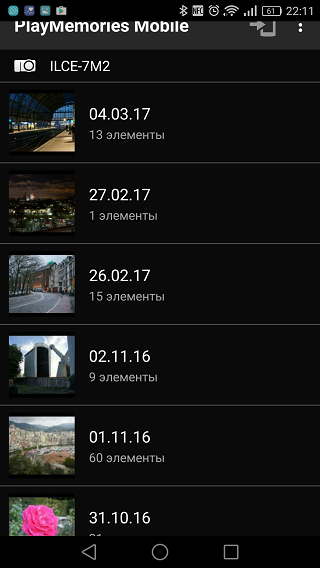
The same sorting by date, by the way, works without problems. In general, the feeling is that the software for the desktop and Android was made and tested by completely different teams, one part works fine, the second somehow.
“Pro” functions
Because The camera is still not cheap, there are a number of functions designed for professional use. The camera can operate on an optional network power source, which allows you to not think about the battery when shooting in the studio, the camera has customizable user buttons that you can take to frequently used functions. Of course, it is possible to use an external flash, manual lenses, and so on.
Great news for owners of previous Sony camera models: a7 supports both full-frame and “close-up” lenses. Those. Old lenses from Sony NEX can be put in the camera, it automatically determines the type of lens, and includes crop mode on the matrix. It is very convenient and useful if someone has good lenses for this format.
And the second great news. Sony a7ii has a built-in optical stabilizer right in the camera. This allows the use of stabilization with all lenses, unlike for example from Canon, where IS lenses are noticeably more expensive than their "unstabilized" counterparts. More principle of the stabilizer can be viewed on the video from Sony:
Finally, actually about the main function of the camera - photographing. I will not take away the bread from dpreview and other similar sites and post a bunch of fragments on different iso, all this has long been published. I will describe the personal sensations of walking with this camera around Amsterdam.
The first thing that is immediately noticeable is that the camera has a very nice and accurate color rendition. It is difficult to explain, but the colors are exactly what they were in reality. There are no “scorched” highlights, but the dynamic range of the full-frame matrix is quite good.

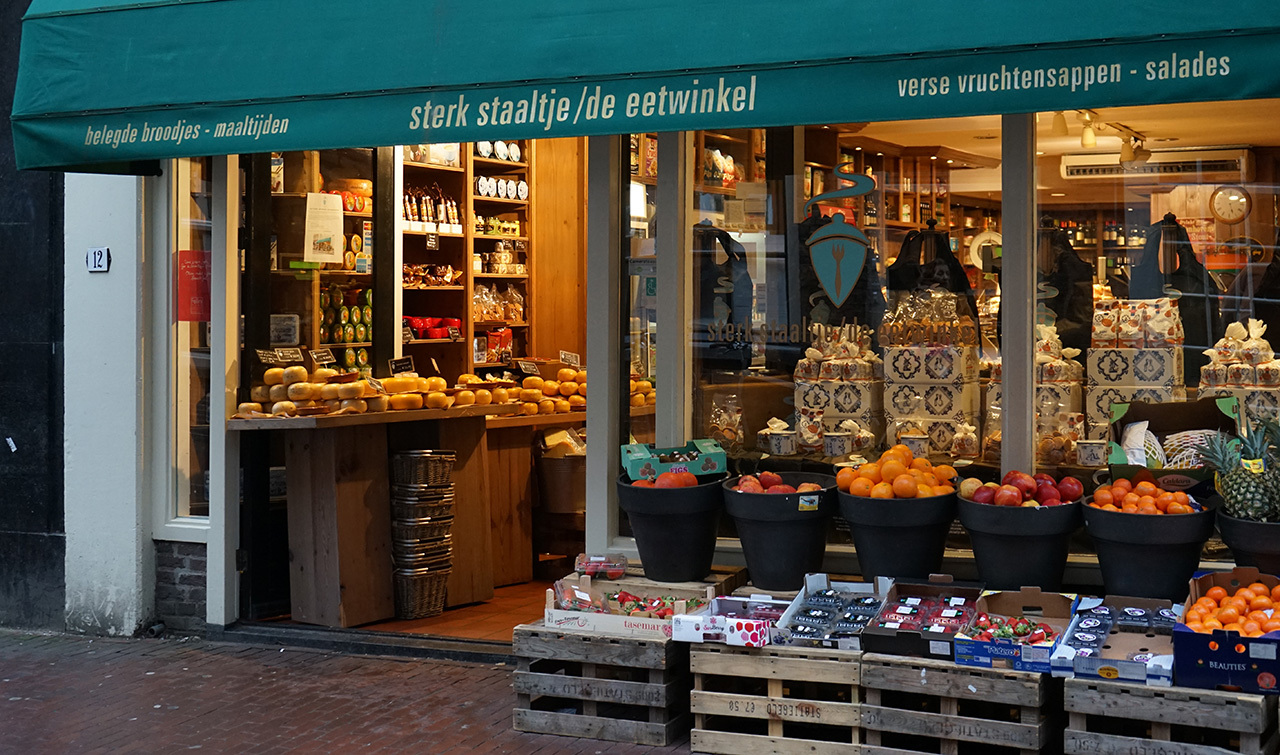
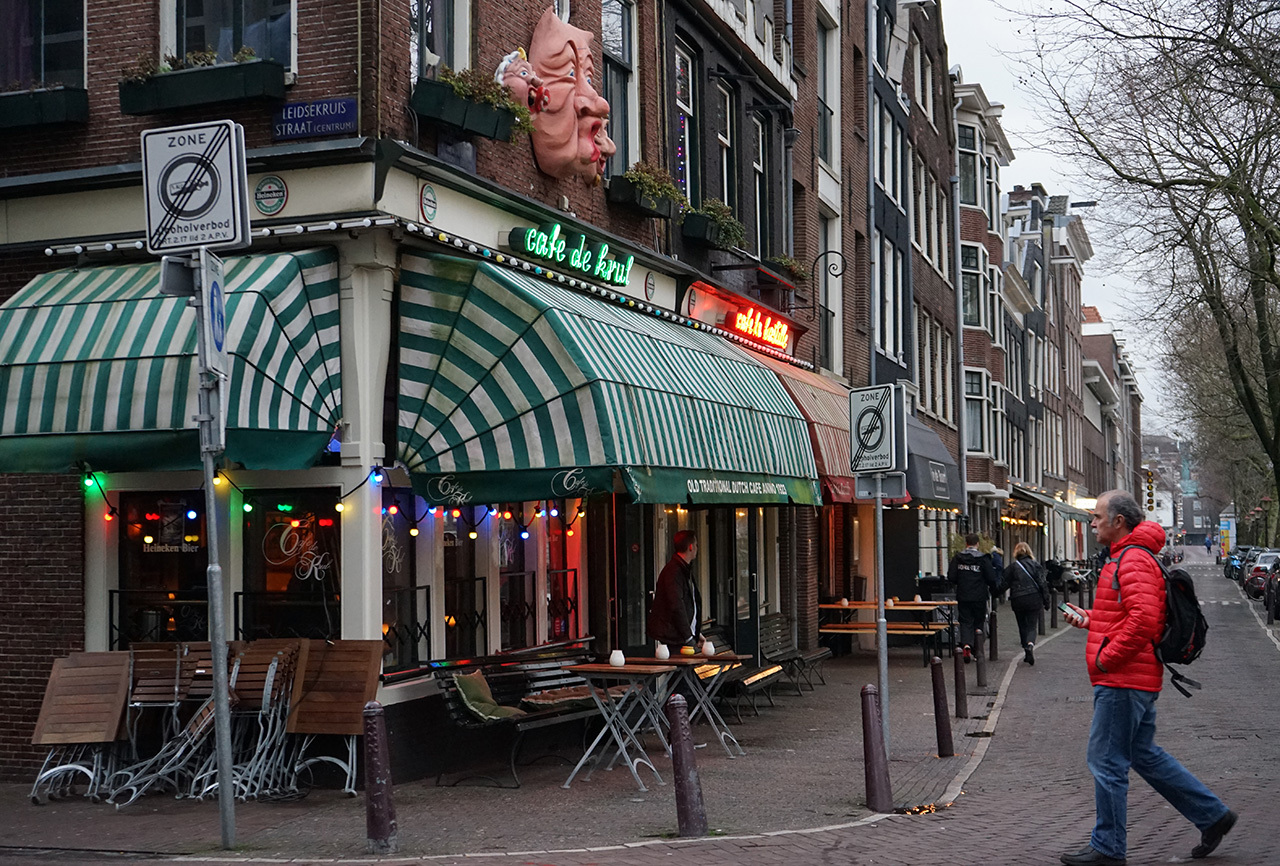
And of course the depth of field, where do without it.

In this frame, by the way, there is a small nuance. It was already about 18 in the evening, almost twilight and rather dark. So, the iso in this snapshot is 5000. One of the advantages of low noise and a large matrix (by the way, in the previous frame, the “only” iso is 3200). I promised not to show cropping, but I will show this one for example:

It is quite acceptable for ISO 5000, given that the size of a full frame is 6000x4000, i.e. This picture is suitable for both viewing and printing.
And bicycles, where in Amsterdam without them:
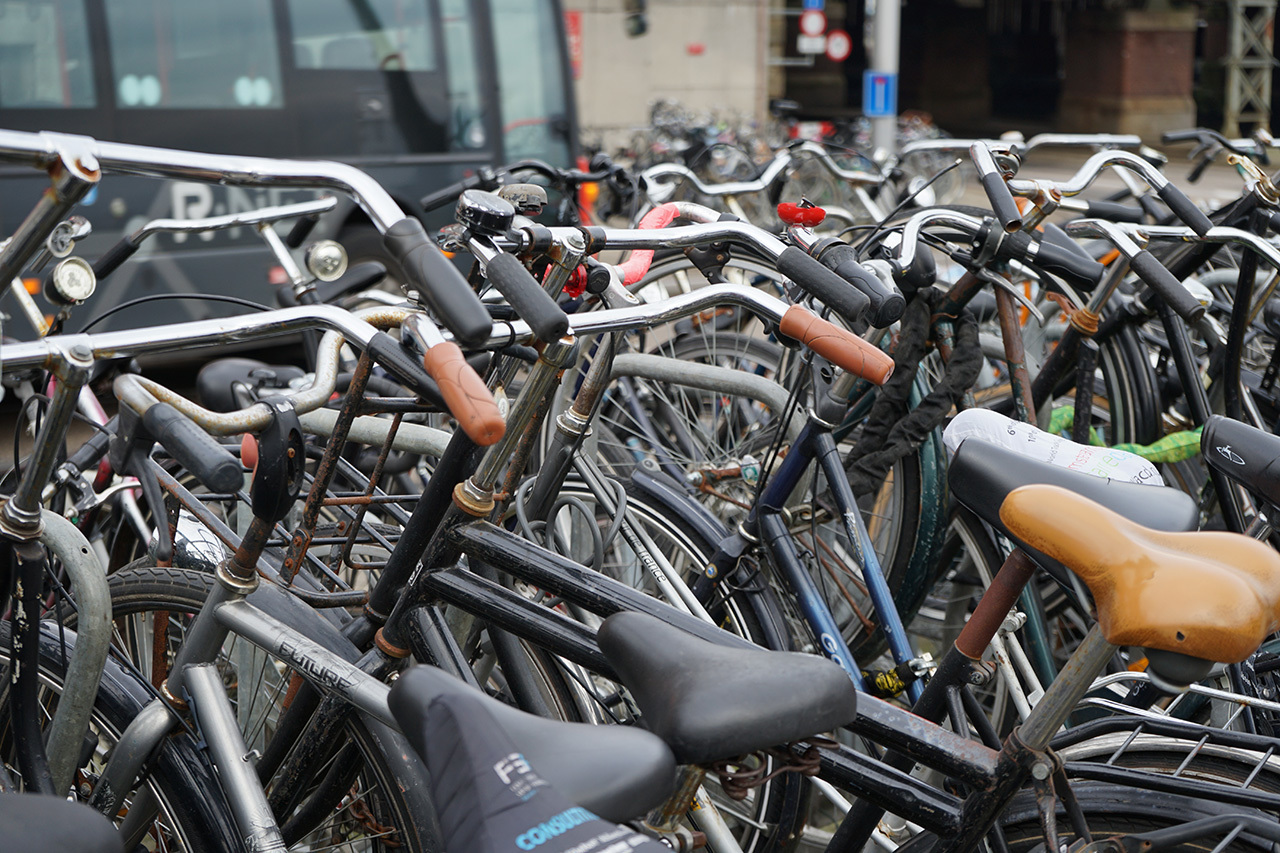
And of course, the main advantage of cameras with a large matrix size for portrait photography is in a small depth of field, which allows you to effectively separate the object from the background.
Photo from Laban Chen ( flickr ):

By the way, on the flickr website you can findA large number of different frames from the camera .
SLR vs smartphone.
And finally, a humorous mini-test for those who have never shot a good camera, because "Why, if so, always with a smartphone there." And although such a test is completely meaningless from a technical point of view, the result is obvious, but why not check. The photo for the test was made in the most “gentle” mode for the smartphone - an overcast day, no bright sun, a wide angle and no small DOF.
Because The pros from the photo said their fair "fi" meaninglessness of such a comparison, so as not to hurt their tender soul, hide the results under the spoiler.
Of course, this test does not cover even 30% of the capabilities of a camera of this class. Not tested in particular shooting video, portrait shooting, and the number of lenses that would be interesting to try, is very large.
Now about the sad, about the price. The price of the Sony A7ii is at the time of writing the article 109 thousand for the body without a lens, the A7 model is cheaper, 85 thousand, but still, of course, expensive. On the other hand, it is only 1.5 iPhones or less than 1 MacBook. Considering the number of both iPhones and MacBooks sold, it can be considered that it is quite possible to buy this camera with a serious desire. But in general, technical progress is moving forward, which is good news. If some 5 years ago someone had told me that the full-frame camera could be put in a pocket and go for a walk, I would not have believed it. And now it is real, the A7 with a short-focus fix fits perfectly into the pocket of a photojacket.
Ps. Those who want to find test shots in the original resolution can download them from the dpreview site already mentioned above.
→Crops with the ability to select a camera for comparison
→ PPS full-size samples : Gallery of camera images on flickr: www.flickr.com/cameras/sony/ilce-7m2
10 years have passed since then, and digital technologies have noticeably gone ahead. Cameras with a full-frame matrix are now cheaper, and their capabilities, naturally, are greater than those of cameras 10 years ago.
Who are interested in the impressions of the "teapot" from the camera Sony A7II, please under the cat.

Before that, I used a camera of a similar type, Sony NEX5, so comparing them was all the more interesting.
Appearance and dimensions
Quite conventionally, “mirror” cameras can be divided into 2 subspecies - large-sized SLR cameras with a “real” mirror and phase autofocus, and mirrorless cameras that have the same matrix, but focusing as digital cameras, using a contrast method and viewing the screen. The division is very conditional, now almost all cameras are capable of working and so (there was a time when there was no live view in the mirrors, and you only had to look through the viewfinder). From the user's point of view, plus cameras of the first type have a much longer battery life - when the screen is off, the SLR uses almost no energy. But plus cameras of the second type are much more compact in the camera, since there is no mirror in it.
In this regard, Sony a7 refers to the second type. The camera is very compact, the shape of something resembles Sony NEX. The control is much more convenient - all the main functions are placed on buttons or buttons, there is practically no need to climb into the menu.

Some do not like such an abundance of buttons, although in reality it is very convenient, everything is at hand, and in principle nothing superfluous. The LCD screen is clear and of high quality; many elements of the layout are almost indistinguishable from the NEX series. Unlike the NEX, a viewfinder has been added here (of course electronic), although for me there is practically no benefit from it, it would be better to save a centimeter of height and $ 50 in cost. It turns on automatically: if you bring the camera closer to the eye, the screen turns off and the viewfinder turns on. For fans of the "old school", you can turn on the display of pictures only in the viewfinder.
Interfaces
USB
Everything is standard here - we connect the camera, you can select the mass storage or MTP mode. But there is an important plus. A dream come true idiot - the camera can now be charged directly via USB. Finally, you don’t need to carry a debility individual w / c with a separate wire with you on trips. My first digital camera was the Canon 300d (the old-timers probably remember this model), and 15 years had not passed before the battery was finally implemented in the camera. And finally, the praise of standardization, you can take a single power supply for all charging devices on trips .
Wi-Fi
Finally, progress has reached the cameras. In an era when even a toothbrush connects to a smartphone, sticking a cable in order to upload a photo is somehow lazy. So, the camera has a Wi-Fi module, which theoretically allows access to files directly on the home network. "Theoretically," because in practice it was not so easy. First you need to connect the camera to your home network. Then you need to install on the computer the PlayMemories program from Sony, which contains the necessary services. After that you can access the files.
I immediately decided to check how it all works, put the old NEX5 flash drive into the camera (there were about 3000 files on it), took a couple of photos and decided to download them. I chose the option “transfer to computer” in the camera menu, the camera connected to the home network, my computer automatically recognized the presence of a new media disk. But that was it. Instead of showing everything as it is, “smart” software decided to automatically split the photo by date, in the form of virtual folders. However, the flash drive was 16 gigabytes of photos for the past 3 years, somewhere around 4,000 pieces. In general, I waited 10 minutes, then the camera fell off on a timeout from the access point, not a single file was downloaded. Several repeated attempts gave the same result.
The maximum that I received is this screen:

In general, the idea of “seeing” a camera over WiFi like a normal drive is very good. But I had to take the old-fashioned cable and connect the camera in the usual way.
But the WiFi connection with the smartphone passed without problems. The camera can create its own WiFi network, a smartphone is connected to it. Then, using the program for Android, you can easily see all the photos, everything works quickly and clearly.

The same sorting by date, by the way, works without problems. In general, the feeling is that the software for the desktop and Android was made and tested by completely different teams, one part works fine, the second somehow.
“Pro” functions
Because The camera is still not cheap, there are a number of functions designed for professional use. The camera can operate on an optional network power source, which allows you to not think about the battery when shooting in the studio, the camera has customizable user buttons that you can take to frequently used functions. Of course, it is possible to use an external flash, manual lenses, and so on.
Great news for owners of previous Sony camera models: a7 supports both full-frame and “close-up” lenses. Those. Old lenses from Sony NEX can be put in the camera, it automatically determines the type of lens, and includes crop mode on the matrix. It is very convenient and useful if someone has good lenses for this format.
And the second great news. Sony a7ii has a built-in optical stabilizer right in the camera. This allows the use of stabilization with all lenses, unlike for example from Canon, where IS lenses are noticeably more expensive than their "unstabilized" counterparts. More principle of the stabilizer can be viewed on the video from Sony:
A photo
Finally, actually about the main function of the camera - photographing. I will not take away the bread from dpreview and other similar sites and post a bunch of fragments on different iso, all this has long been published. I will describe the personal sensations of walking with this camera around Amsterdam.
The first thing that is immediately noticeable is that the camera has a very nice and accurate color rendition. It is difficult to explain, but the colors are exactly what they were in reality. There are no “scorched” highlights, but the dynamic range of the full-frame matrix is quite good.



And of course the depth of field, where do without it.

In this frame, by the way, there is a small nuance. It was already about 18 in the evening, almost twilight and rather dark. So, the iso in this snapshot is 5000. One of the advantages of low noise and a large matrix (by the way, in the previous frame, the “only” iso is 3200). I promised not to show cropping, but I will show this one for example:

It is quite acceptable for ISO 5000, given that the size of a full frame is 6000x4000, i.e. This picture is suitable for both viewing and printing.
And bicycles, where in Amsterdam without them:

And of course, the main advantage of cameras with a large matrix size for portrait photography is in a small depth of field, which allows you to effectively separate the object from the background.
Photo from Laban Chen ( flickr ):

By the way, on the flickr website you can findA large number of different frames from the camera .
SLR vs smartphone.
And finally, a humorous mini-test for those who have never shot a good camera, because "Why, if so, always with a smartphone there." And although such a test is completely meaningless from a technical point of view, the result is obvious, but why not check. The photo for the test was made in the most “gentle” mode for the smartphone - an overcast day, no bright sun, a wide angle and no small DOF.
Because The pros from the photo said their fair "fi" meaninglessness of such a comparison, so as not to hurt their tender soul, hide the results under the spoiler.
Comparison under the spoiler
Кадр с Sony:

Кадр с Huawei P9 Lite:

Даже на web-размере видно, что картинка вроде и та же, а вот цвета совсем не те. На кропе разницу видно куда больше:
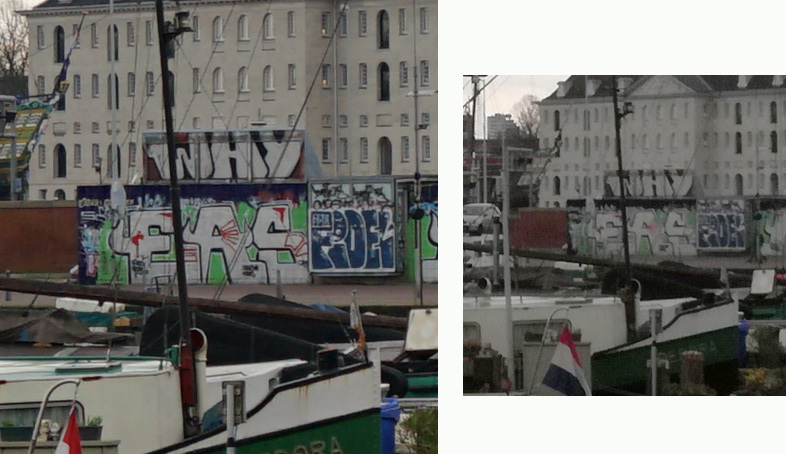
Кадр справа напоминает съемку через мутное стекло, которое хочется протереть тряпкой. Скорее всего, у матрицы смартфона просто нехватило динамического диапазона корректно отобразить и небо и детали внизу.
Вечерняя съемка уже по сути не нужна, результат ясен, но для полноты картины пусть будет. Съемка с рук без штатива.
Кадр с Sony:
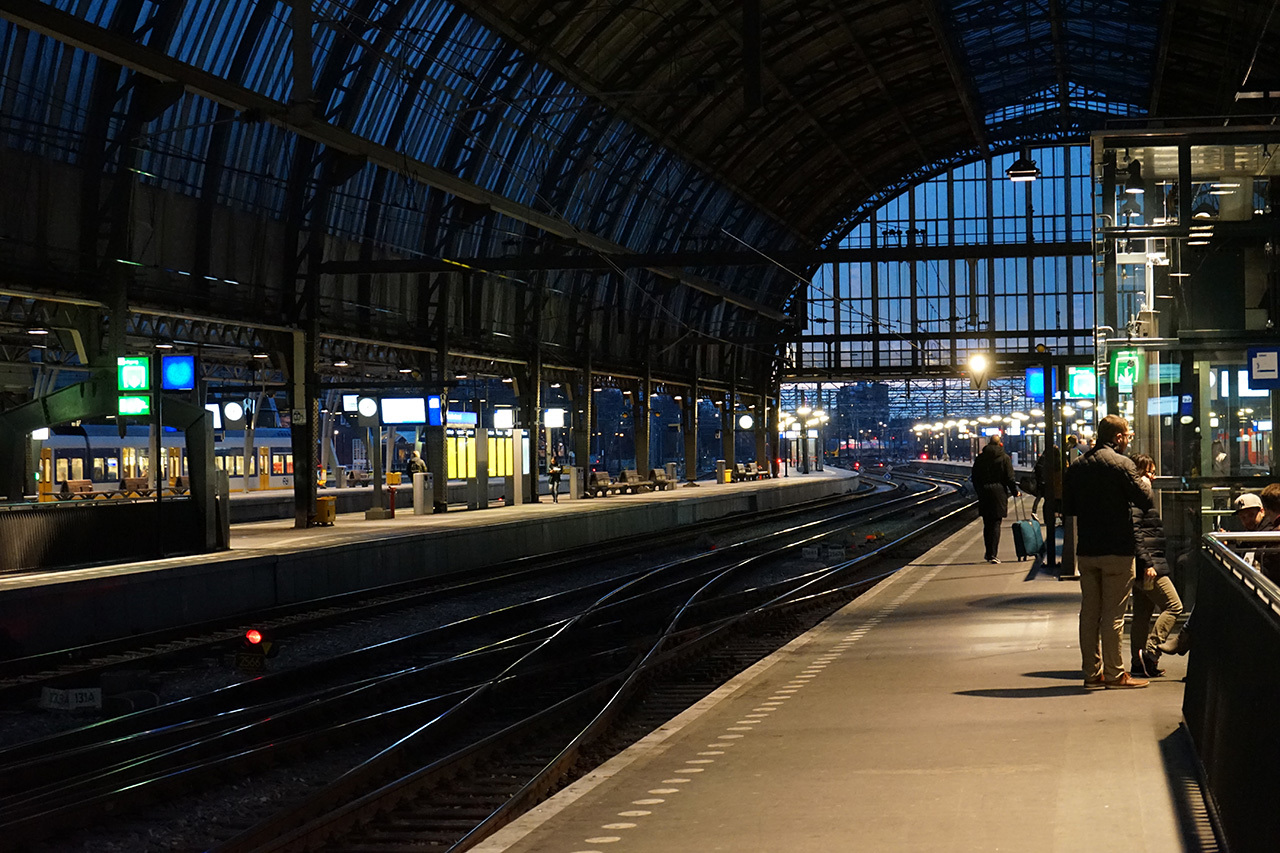
Кадр с Huawei P9 Lite:

Смартфон честно пытался поставить ISO 800 и включить шумодав на максимум, что впрочем удалось, т.к. шумов не видно. На Sony за счет гораздо меньшей светосилы штатного объектива (F5.6 против F2) пришлось использовать ISO 6400, но даже в этом случае цветопередача заметно лучше и точнее.

Кадр с Huawei P9 Lite:

Даже на web-размере видно, что картинка вроде и та же, а вот цвета совсем не те. На кропе разницу видно куда больше:

Кадр справа напоминает съемку через мутное стекло, которое хочется протереть тряпкой. Скорее всего, у матрицы смартфона просто нехватило динамического диапазона корректно отобразить и небо и детали внизу.
Вечерняя съемка уже по сути не нужна, результат ясен, но для полноты картины пусть будет. Съемка с рук без штатива.
Кадр с Sony:

Кадр с Huawei P9 Lite:

Смартфон честно пытался поставить ISO 800 и включить шумодав на максимум, что впрочем удалось, т.к. шумов не видно. На Sony за счет гораздо меньшей светосилы штатного объектива (F5.6 против F2) пришлось использовать ISO 6400, но даже в этом случае цветопередача заметно лучше и точнее.
Conclusion
Of course, this test does not cover even 30% of the capabilities of a camera of this class. Not tested in particular shooting video, portrait shooting, and the number of lenses that would be interesting to try, is very large.
Now about the sad, about the price. The price of the Sony A7ii is at the time of writing the article 109 thousand for the body without a lens, the A7 model is cheaper, 85 thousand, but still, of course, expensive. On the other hand, it is only 1.5 iPhones or less than 1 MacBook. Considering the number of both iPhones and MacBooks sold, it can be considered that it is quite possible to buy this camera with a serious desire. But in general, technical progress is moving forward, which is good news. If some 5 years ago someone had told me that the full-frame camera could be put in a pocket and go for a walk, I would not have believed it. And now it is real, the A7 with a short-focus fix fits perfectly into the pocket of a photojacket.
Ps. Those who want to find test shots in the original resolution can download them from the dpreview site already mentioned above.
→Crops with the ability to select a camera for comparison
→ PPS full-size samples : Gallery of camera images on flickr: www.flickr.com/cameras/sony/ilce-7m2
